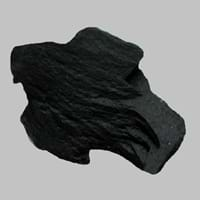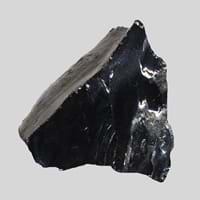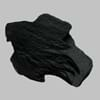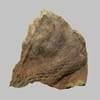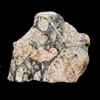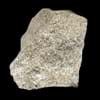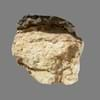Definition
Lignite is a soft brownish coal which shows traces of plants and is intermediate between bituminous coal and peat
Anthracite is a type of sedimentary rock which is hard and is variety of coal that has high luster
Origin
France
Pennsylvania, U.S.
Discoverer
Unknown
Unknown
Etymology
From French, Latin lignum wood + -ite1
From Greek anthrakites, from anthrax, anthrak meaning coal
Class
Sedimentary Rocks
Metamorphic Rocks
Sub-Class
Durable Rock, Soft Rock
Durable Rock, Soft Rock
Group
Not Applicable
Not Applicable
Other Categories
Coarse Grained Rock, Fine Grained Rock, Medium Grained Rock, Opaque Rock
Coarse Grained Rock, Fine Grained Rock, Medium Grained Rock, Opaque Rock
Texture
Amorphous, Glassy
Amorphous, Glassy
Color
Black, Brown, Dark Brown, Grey, Light to Dark Grey
Black, Brown, Dark Brown, Grey, Light to Dark Grey
Durability
Durable
Durable
Appearance
Veined or Pebbled
Veined or Pebbled
Interior Uses
Not Yet Used
Not Yet Used
Exterior Uses
Not Yet Used
Not Yet Used
Other Architectural Uses
Not Yet Used
Not Yet Used
Construction Industry
for Road Aggregate, Steel Production
Cement Manufacture, for Road Aggregate, Making natural cement, Steel Production
Medical Industry
Not Yet Used
In Chemical and Pharmaceutical Industry, Manufacture of Aspirins
Antiquity Uses
Not Yet Used
Not Yet Used
Commercial Uses
Electricity Generation
Alumina Refineries, Electricity Generation, Liquid Fuel, Manufacture of Soap, Solvents, Dyes, Plastics and Fibres, Paper Industry
Types
Xyloid Lignite or Fossil Wood and Compact Lignite or Perfect Lignite
Semi-anthracite and Meta-anthracite
Features
Generally rough to touch, Helps in production of Heat and Electricity, Used as fossil fuel
Helps in production of Heat and Electricity, Used as fossil fuel
Archaeological Significance
Monuments
Not Yet Used
Not Yet Used
Famous Monuments
Not Applicable
Not Applicable
Sculpture
Not Yet Used
Not Yet Used
Famous Sculptures
Not Applicable
Not Applicable
Figurines
Not Yet Used
Not Yet Used
Formation
Coal formation takes place due to accumulation of plant debris in a swamp environment. The Coal formation process continues, as peat turns into lignite brown or black coal at increasing heat and pressure.
Anthracite forms from the accumulation of plant debris in a swamp environment. When plant debris dies and falls into the swamp, the standing water of the swamp protects it from decay.
Mineral Content
Not Available
Calcite, Clay, Clay Minerals
Compound Content
Carbon, Hydrogen, Nitrogen, Oxygen, Sulphur
Carbon, Hydrogen, Nitrogen, Oxygen, Sulphur
Types of Metamorphism
Not Applicable
Burial Metamorphism, Contact Metamorphism, Regional Metamorphism
Types of Weathering
Biological Weathering, Chemical Weathering, Mechanical Weathering
Not Applicable
Types of Erosion
Chemical Erosion, Water Erosion, Wind Erosion
Not Applicable
Grain Size
Medium to Fine Coarse Grained
Medium to Fine Coarse Grained
Fracture
Conchoidal
Conchoidal
Porosity
Highly Porous
Less Porous
Luster
Dull to Vitreous to Submetallic
Shiny
Cleavage
Non-Existent
Non-Existent
Toughness
Not Available
Not Available
Specific Gravity
1.1-1.4
1.1-1.4
Transparency
Opaque
Opaque
Density
800-801 g/cm3
1.25-2.5 g/cm3
Resistance
Heat Resistant
Heat Resistant, Water Resistant
Deposits in Eastern Continents
Asia
Bangladesh, Burma, Cambodia, China, India, Indonesia, Kazakhstan, Malaysia, Mongolia, Pakistan, Turkey, Vietnam
Bangladesh, Burma, Cambodia, China, India, Indonesia, Kazakhstan, Malaysia, Mongolia, Pakistan, Turkey, Vietnam
Africa
Botswana, Kenya, Morocco, Mozambique, South Africa, Tanzania
Botswana, Kenya, Morocco, Mozambique, South Africa, Tanzania
Europe
Belgium, Bulgaria, England, France, Germany, Greece, Hungary, Kosovo, Netherlands, Norway, Poland, Romania, Serbia, Slovakia, Slovenia, The Czech Republic, Ukraine, United Kingdom
Belgium, Bulgaria, England, France, Germany, Greece, Hungary, Kosovo, Netherlands, Norway, Poland, Romania, Serbia, Slovakia, Slovenia, The Czech Republic, Ukraine, United Kingdom
Others
Not Yet Found
Not Yet Found
Deposits in Western Continents
North America
Canada, Mexico, USA
Canada, Mexico, USA
South America
Brazil, Chile, Colombia, Venezuela
Brazil, Chile, Colombia, Venezuela
Deposits in Oceania Continent
Australia
New South Wales, Queensland, Victoria
New South Wales, Queensland, Victoria
